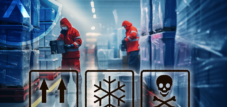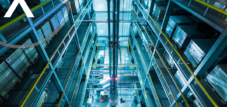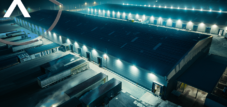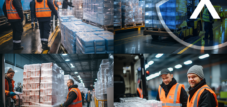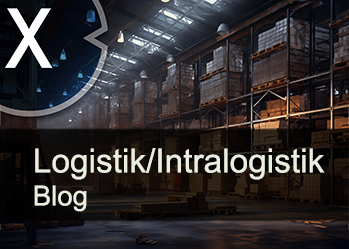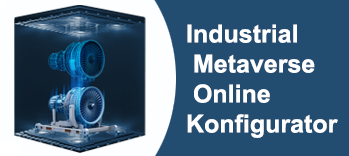Cold, costs, staff shortages: How cold storage technology solves three huge problems at once
Xpert pre-release
Language selection 📢
Published on: September 19, 2025 / Updated on: September 19, 2025 – Author: Konrad Wolfenstein

Cold, costs, staff shortages: How cold storage technology solves three huge problems at once – Image: Xpert.Digital
How refrigeration automation makes the world of work more human
More than just robots: How automation improves working conditions in cold chains and reduces labor costs
The modern cold chain faces fundamental challenges that go far beyond technical aspects. At a time when almost 50 percent of logistics companies are struggling with staff shortages and labor costs are continuously rising, automation offers not only a technical solution but also a human response to the unique challenges of cold storage areas. Robotics in cold chains is more than just increasing efficiency—it is a step toward better working conditions, higher employee satisfaction, and sustainable cost savings.
The underestimated reality of cold work
Working in cold storage and freezer facilities places extraordinary physical and psychological stress on employees. In temperatures ranging from 5 to minus 30 degrees Celsius, workers must perform strenuous physical labor every day while fully wrapped in cold-protective clothing. These extreme conditions lead to a multitude of health risks that are often underestimated.
The human body is not designed for such extreme temperatures. Even at temperatures below minus 5 degrees Celsius, blood circulation in the extremities begins to suffer, and there is an acute risk of frostbite. However, the danger begins even at milder temperatures: cold injuries can occur even at temperatures around freezing, especially when humidity and wind are added.
The problem is exacerbated by the required protective clothing. While this protects against cold-related injuries, it also significantly restricts mobility. Thick gloves make precise gripping movements and the operation of scanners or touchscreens more difficult. Employees are often forced to remove their gloves to complete tasks—a behavior that not only endangers their health but also leads to productivity problems.
Health risks and occupational safety challenges
Working in cold environments poses a variety of health risks that go beyond the obvious exposure to cold. Among the most common problems are cardiovascular problems due to the constant strain on the thermoregulatory system. The body attempts to maintain core temperature through shivering and circulatory centralization, leading to increased energy consumption and stress on the cardiovascular system.
Frostbite is a common risk, especially on the hands, feet, and face. It occurs not only from direct contact with frozen products, but also from reduced blood circulation during prolonged exposure to cold. Even mild frostbite can cause long-term damage and impair work performance.
The psychological effects are also significant. The constant exposure to cold leads to stress and can impair concentration. Employees report increased fatigue and decreased motivation. The need to move between different temperature zones several times a day—from the refrigerated area to normal room temperature or even outdoors—puts additional strain on the body through thermal shock.
Particularly problematic is the limited mobility caused by the required protective equipment. Heavy, insulating clothing makes movements slower and more laborious. This not only leads to reduced productivity but also increases the risk of accidents due to restricted vision and mobility.
Ergonomic challenges in the cold
The ergonomic problems in cold storage areas are complex and affect virtually every aspect of work. The combination of cold temperatures and the required protective clothing creates a work environment that contradicts basic ergonomic principles. Normal work routines become physical challenges that not only impair efficiency but can also cause long-term health problems.
A key problem is the reduced dexterity caused by thick gloves. Tasks that are normally simple—such as grasping small objects, operating equipment, or reading labels—become time-consuming and frustrating activities. This often leads employees to compromise safety by removing gloves or using inadequate protective equipment.
Lighting in cold storage rooms presents further ergonomic challenges. Low temperatures can impair the performance of lighting systems, and fogged lenses or viewing windows further complicate work. Standard illuminance requirements in cold storage facilities are only 100 to 150 lux, which is insufficient for many tasks.
Automation as a solution to human challenges
Cold chain automation offers an elegant solution to many of the problems described. Modern robotic systems are specifically designed for extreme cold conditions and can operate reliably at temperatures as low as minus 30 degrees Celsius. These systems not only take over repetitive and physically demanding tasks, but also relocate workstations from cold storage areas to better-temperatured and better-lit control rooms.
A prime example is the use of Kuka robots in the deep-freeze industry. These systems operate without protective clothing at minus 25 degrees Celsius and can perform precise palletizing tasks that previously had to be performed manually by employees in three shifts, five days a week. Automation relieves employees of direct exposure to the cold and allows them to work in more comfortable environments.
The benefits go beyond mere cold relief. Automated systems operate continuously and precisely, without their performance being affected by temperature changes or fatigue. They require no warm-up breaks and can operate around the clock, significantly increasing productivity.
Transforming workplaces through technology
The introduction of automation in cold chains is leading to a fundamental transformation of workplaces. Instead of moving heavy loads in freezing temperatures, employees now monitor and control automated systems from climate-controlled control rooms. This shift has far-reaching positive effects on working conditions and employee satisfaction.
The new work environment is not only more comfortable but also safer. Employees are no longer exposed to the risk of frostbite or cardiovascular problems caused by extreme cold. Workwear can be more standard and functional, significantly improving mobility and well-being.
At the same time, the demands on employee qualifications are increasing. Operating and maintaining automated systems requires technical understanding and continuous training. This leads to more interesting and valuable jobs that offer better career prospects and higher wages.
Automation also creates more flexible working hours. While traditional refrigeration work is often tied to specific shift times, automated systems can run continuously, while human supervision can be more flexible.
Increase productivity and reduce errors
A key benefit of automation is the dramatic increase in productivity and accuracy. Human workers in cold environments are limited in their performance by the extreme conditions. Cold slows movements, makes precise movements more difficult, and leads to more frequent breaks.
Automated systems, on the other hand, operate at a constant speed and precision. They are unaffected by temperature fluctuations and require no warm-up breaks. This leads to significantly higher throughput and more consistent work quality.
The error rate is also drastically reduced. Human errors in refrigerated areas often arise from limited visibility, reduced dexterity, or fatigue caused by the extreme conditions. Automated systems utilize sensors and image processing technology that operate reliably even under challenging conditions.
These improvements have a direct impact on customer satisfaction. Fewer picking errors mean fewer complaints and returns. Consistent work quality leads to more reliable delivery times and higher product quality.
Long-term cost analysis and return on investment
Investing in cold chain automation requires significant initial capital expenditure, but the long-term savings are substantial. A detailed cost analysis shows that automated systems often pay for themselves more quickly in cold storage areas than in other applications, as the unique challenges of cold storage result in higher labor costs and more frequent downtimes.
The direct labor cost savings are significant. Traditional refrigeration work not only requires higher wages due to the difficult working conditions, but also more frequent staff turnover, higher sickness rates, and additional costs for protective equipment and healthcare.
Indirect savings arise from reduced error rates, fewer product losses, and lower energy costs. Automated systems open cold storage rooms less frequently and for shorter periods, reducing energy consumption for cooling.
Typical return on investment for cold chain automation ranges from two to four years, depending on the size of the facility and the level of automation. The fastest paybacks are achieved in areas with high throughput and extreme temperatures.
Xpert partner in warehouse planning and construction
Automated cold chains: Innovations for sustainable working conditions and maximum precision
Employee satisfaction and staff retention
An often underestimated benefit of automation is the significant improvement in employee satisfaction. Employees perceive freedom from extreme cold as a significant improvement in their working conditions. Studies show that over 75 percent of warehouse workers find their work more enjoyable when their tasks are less physically demanding.
The transformation from physical to technical work makes positions in cold storage logistics more attractive to workers. Instead of applying for a job with extreme physical demands, employees can now work in a technologically demanding environment that offers better career prospects.
This improvement is particularly important given the acute shortage of skilled workers in the logistics industry. In Germany, over 90 percent of logistics companies are already affected by the shortage. More attractive working conditions through automation can help attract and retain qualified personnel.
Higher employee satisfaction also leads to lower turnover, resulting in further cost savings in recruitment and training. Experienced employees who are familiar with automated systems become valuable assets for the company.
Technological innovation and future prospects
Cold chain automation technology is evolving rapidly. Modern systems combine robotics with artificial intelligence to become even more flexible and efficient. Predictive analytics help predict maintenance needs and prevent downtime.
Mobile robots and autonomous transport systems are revolutionizing material flow in cold storage areas. These systems can move independently between different temperature zones while maintaining the cold chain. They further reduce the need for human intervention and improve energy efficiency.
Collaborative robots that can work safely alongside humans open up new possibilities for hybrid automation. These systems can combine the strengths of human flexibility with robotic precision and cold resistance.
The integration of Internet of Things technology enables real-time monitoring of all aspects of cooling operations. From temperature control to energy efficiency, all parameters can be continuously optimized.
Implementation strategies for cold chain automation
A successful transition to automated cold chains requires a well-thought-out implementation strategy. Companies should begin with a thorough analysis of their current processes and pain points. The unique challenges of cold storage operations—from labor costs to health risks—must be quantified to provide a solid basis for investment decisions.
A phased approach is often more successful than a complete transition all at once. Companies can start by automating the most physically demanding or dangerous tasks and then gradually expand to other areas. This allows them to gain experience and optimize the system before making major investments.
Employee involvement from the outset is crucial for success. Transparent communication about the goals of automation—especially improving working conditions—can reduce anxiety and build support. Training programs help prepare employees for new roles in the automated environment.
Energy efficiency and sustainability
An important, often overlooked, benefit of cold chain automation is improved energy efficiency. Cold storage facilities are among the most energy-intensive buildings of all, and any improvement in efficiency has significant impacts on costs and environmental performance.
Automated systems reduce the frequency and duration of door openings in cold storage areas. Every time a cold storage room is opened, cold air escapes and must be replaced with additional cooling capacity. Robots work faster and more precisely than humans, minimizing opening hours.
Optimized storage density through automated systems reduces the amount of cold storage required per stored unit. Vertical storage and efficient space utilization mean less space that needs to be cooled.
Modern automation systems are also energy-efficient in their own operation. LED lighting, efficient motors, and intelligent controls reduce the systems' direct energy consumption.
Quality assurance and traceability
Cold chain automation brings significant benefits for quality assurance and product traceability. Automated systems can continuously monitor and document temperature, humidity, and other critical parameters. This is especially important in the food industry, where compliance with the cold chain is required by law.
Sensor technology enables seamless documentation of all movements and conditions. Every product can be tracked from receipt to shipment, with precise data on temperature exposure and handling.
This detailed documentation is important not only for regulatory compliance but also for continuous process improvement. Data analysis can reveal trends and optimization opportunities that would be undetectable through manual work.
Security improvements through automation
The safety benefits of automation go far beyond reducing cold exposure. Automated systems eliminate many of the typical accident risks in cold storage areas, from falls on icy floors to injuries from lifting heavy loads with limited mobility.
Reducing human presence in hazardous areas is a fundamental safety benefit. Fewer people in cold, slippery environments automatically means a lower risk of accidents. At the same time, robots can respond more quickly and safely in emergency situations than humans, who are hampered by protective clothing and the cold.
Modern safety systems continuously monitor all aspects of operations and can respond immediately to any anomalies. This includes not only mechanical problems, but also temperature deviations or other factors that could compromise product safety.
Integration with existing systems
A critical success factor for cold chain automation is seamless integration with existing warehouse management systems and ERP software. Automated systems must communicate in real time with the enterprise software to manage inventory, process orders, and coordinate deliveries.
The integration also enables advanced analytics and optimization. Data from automated systems can be combined with sales data, weather forecasts, and other factors to predict demand and optimize inventory levels.
Cloud-based solutions facilitate integration and enable access to system data from anywhere. This is especially valuable for companies with multiple locations or for management that needs operational insights without being physically present.
Economic impact on the industry
The increasing automation of cold chains has far-reaching economic implications for the entire industry. Companies that invest early in automation gain competitive advantages through lower operating costs, higher quality, and improved service levels.
The technology is becoming increasingly accessible even for smaller companies. Modular systems and leasing options reduce barriers to entry, while proven benefits minimize risk.
The standardization of automation technology leads to economies of scale that further reduce costs. At the same time, a new market for specialized services, from installation and maintenance to data analysis and optimization, is emerging.
Future-proof cold chains through smart automation and human expertise
Cold chain automation represents more than just a technological advancement—it's a fundamental shift toward more humane and sustainable working conditions. While robots and automated systems take over the heavy, dangerous work in extreme cold, human workers are freed up for more valuable, technical tasks.
The economic benefits are compelling: lower labor costs, higher productivity, better quality, and more satisfied employees. The investments typically pay for themselves within a few years, while the benefits last for decades.
The future of cold chain logistics is shaping up to be a landscape that optimally combines human expertise with robotic precision. Employees monitor and optimize automated systems from comfortable control rooms, while robots do the hard work in the cold.
This transformation is not only desirable, but necessary given the shortage of skilled workers and increasing demands for quality and efficiency. Companies that invest in cold chain automation today are positioning themselves for a future in which excellent working conditions and operational excellence go hand in hand.
The message is clear: Automation in cold chains is more than just robots—it's the key to better jobs, happier employees, and sustainable profitability. In an industry traditionally characterized by hard physical labor, technology opens up new opportunities for decent and fulfilling jobs.
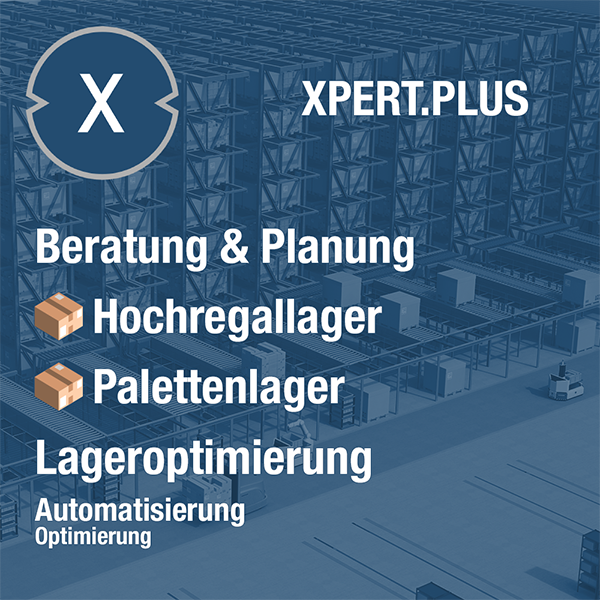
Xpert.Plus warehouse optimization - high-bay warehouses such as pallet warehouses consulting and planning
We are there for you - advice - planning - implementation - project management
☑️ Our business language is English or German
☑️ NEW: Correspondence in your national language!
I would be happy to serve you and my team as a personal advisor.
You can contact me by filling out the contact form or simply call me on +49 89 89 674 804 (Munich) . My email address is: wolfenstein ∂ xpert.digital
I'm looking forward to our joint project.







